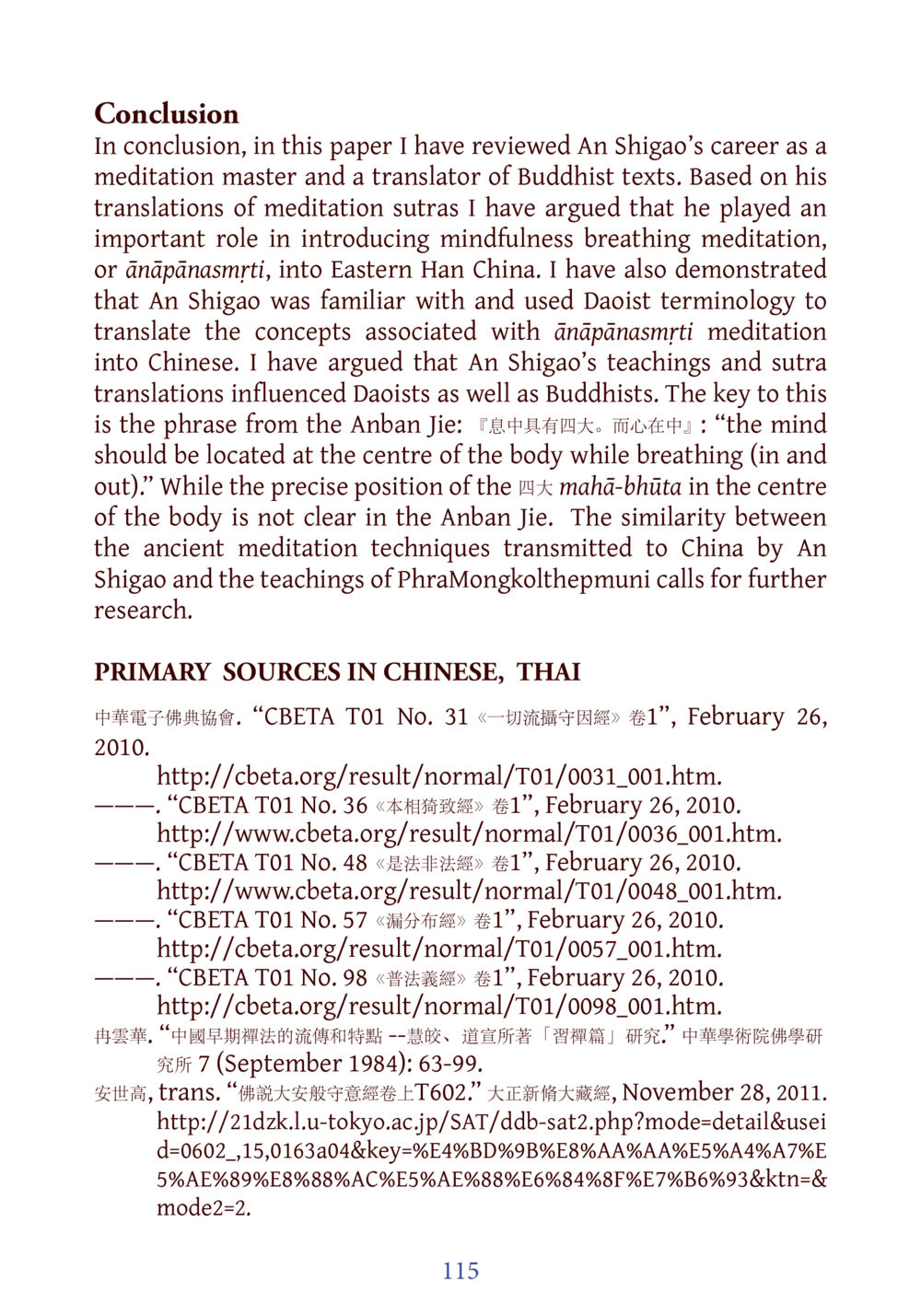The Influence of An Shigao on Meditation in Eastern Han China : หน้า 136/141
DIRI Journal : หน้า 136/141 Exploring An Shigao's role in introducing mindfulness breathing meditation to Eastern Han China through translations and teachings.
1 ครั้ง

สรุปเนื้อหา
In this conclusion, I highlight An Shigao's significant contributions as a meditation master and translator of Buddhist texts. His translation of meditation sutras introduced mindfulness breathing meditation (ānāpānasmṛti) to Eastern Han China. An Shigao's adept use of Daoist terminology facilitated the integration of Buddhist practices into Chinese Daoism. A crucial quote from the Anban Jie emphasizes the importance of centering the mind during breathing exercises, underscoring a potential link between his teachings and both Buddhist and Daoist practices. The similarities between ancient meditation techniques brought by An Shigao and the teachings of PhraMongkolthepmuni indicate the need for further research into this interconnectedness.
หัวข้อประเด็น
- An Shigao's career
- Role in Eastern Han China
- Translation of meditation sutras
- Integration of Daoist terms
- Influence on Buddhism and Daoism
- Mindfulness breathing meditation
ข้อความต้นฉบับในหน้า
หน้าหนังสือทั้งหมด













































































































































